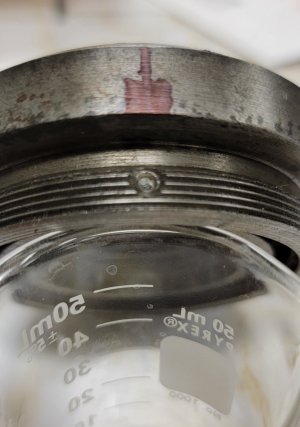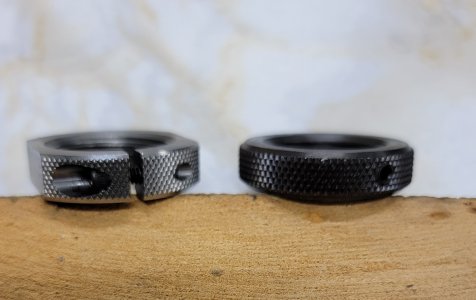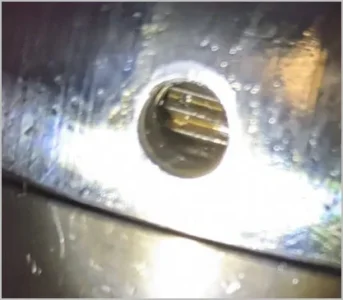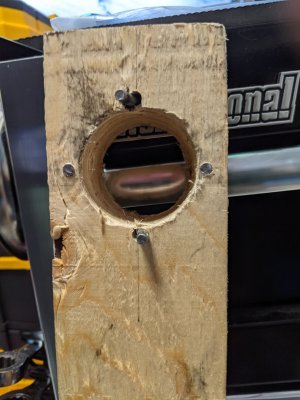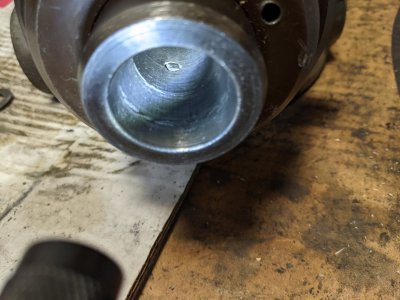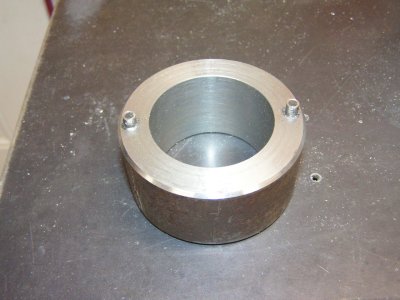I'm wondering if the inner set screw wasn't actually put in properly and catching on the nose cover? I wonder how they even managed to get the cover on at all...
View attachment 16021
That's exactly what I was wondering - if outer set screw C has migrated outward or somehow installed just a but proud & catching the nose cap ID. I cant think of any way to remove them from inside the quill unless they happen to be dead loose, nothing to wrench onto. Lets think happy thoughts for now & assume its the main nose cap threads or some crap has migrated down.
Gentle heat around the thread area might work, sometimes just a bit of expansion is enough to get rotation started & break the rust glue or whatever is holding it firm. I'm not sure if there is a rubber seal in there or not. Trouble is the heat will go right through the mated threads & expand the nose cap almost as fast. I almost wonder if you wouldn't be better off with a strap wrench around the cap & snipe bar for leverage & try & give it a jerk vs pure torque applied through the pin wrench?
When I assembled mine I put a thin smear of anti-seize on the threads thinking I was anal, now I'm kind of glad. But that set screw against the threads business has always bugged me. It should have a deformable lead slug or something as someone mentioned.

